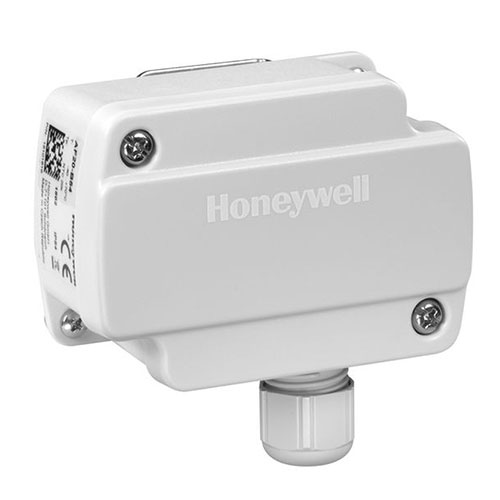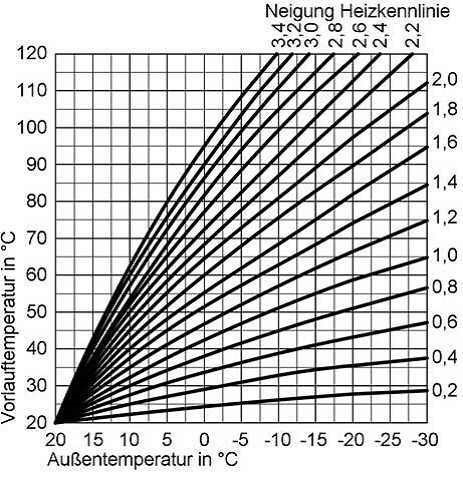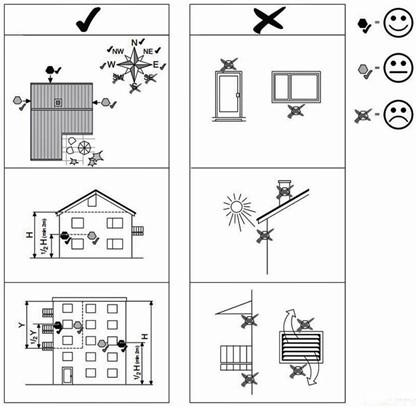What is an outside air temperature sensor? Functionality and installation easily explained
- how does the outdoor sensor work?
- the correct mounting
The outside air temperature sensor is an electrical component that complements the control of a modern heating system. Heating systems with temperature sensors are usually based on the data of a sensor placed in any room. The outside temperature is not taken into account. This is where the outdoor temperature sensor comes in. It optimizes heating performance and increases the potential for saving energy costs.

Source: Honeywell GmbH
Functionality of an outside air temperature sensor
Usually, the outdoor sensor is located on the facade of a building. It is an inconspicuous small box. A component contained in the core of the outdoor sensor measures the outdoor temperature, similar to a thermostat, and transmits the collected data to the heating control unit. With the help of these values and the individually set heating curve, the flow temperature adjusts itself. If it is cold in winter, the flow temperature is raised. Conversely, it is lowered if it is warmer outside.

Where is the best place to install the outdoor sensor?
When installing an outdoor sensor, there are several things to consider, as the distortion of the measured data can lead to a negative impact on the heating quality. The position of the outdoor sensor, should represent a cross-section of the weather conditions to which the house is exposed. What they have to pay attention to we explain to you in the following.
Insolation
Direct exposure to the sun can cause the device to heat up and manipulate the adjustment of the flow temperature. You should avoid niches or placement directly under the roof. Instead, use the north side of the house. If this is not possible, you can also switch to the east or west side. In case of doubt, a cover can be used.
Heat sources
Interfering heat sources range from exhaust pipes and chimneys to doors and windows. The exhaust air as well as the energy escaping from the windows and doors heats up your outdoor sensor unnecessarily. Therefore, you should make sure to place the outdoor sensor at a sufficient distance from such heat sources.
The optimal height
As a rule of thumb, 2/3 of the height of the building can be used. If your house has more than 3 floors, install the outdoor sensor between the 2nd and 3rd floor.

Source: Buderus Thermotechnik
Conclusion
By measuring the outdoor temperature, the outdoor sensor helps your heating system to determine a more efficient flow temperature. In order for your device to function properly, you should pay attention to the correct position during installation. If your sensor is installed correctly, this component can save energy and money.


